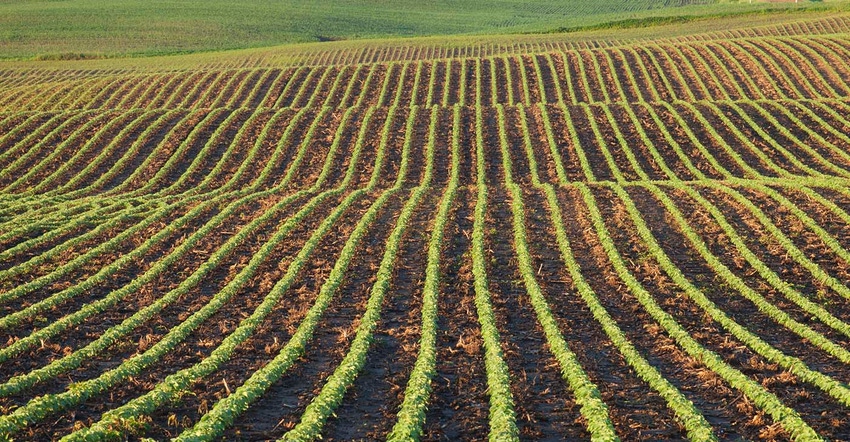
USDA is about to reveal information that will most likely drive the market for the balance of the year.
The U.S. planting intentions report will set the stage for new crop values by determining if potential trend yields will generate enough production to comfortably increase projected ending stocks or keep production small enough to suggest any weather hiccup would cause a shortage.
As for the acreage, there seems to be a math problem that I will discuss below.
The quarterly stocks report will have a significant impact an old crop prices as it will either add significant risk value to the remaining old crop inventory or diffuse the anxiety of traders looking at the availability of summer supplies.
As for stocks, there has been a disconnect between USDA numbers and the battles that cash traders find every day to originate grain.
The quarterly stocks report will reveal to traders how much inventory is on hand and will allow traders to deduct previous inventories to calculate how much demand was used in the last quarter. This demand number will then be used to project future demand through the balance of the year. Thus, a quarterly stocks number that would be low, would imply year-end stocks will also be lower than expected. We lean our expectations towards a tight number due to the fact that it is so difficult to find and originate both corn and or soybeans.
Where is the grain?
End users have discussed many strategies on how to procure grain for summer needs, but in many cases where surveys have been taken, the grain just is not out there. If quarterly stocks come in on the high end of expectations, it will relieve trader concerns about a tight situation, but we are confident cash traders will not agree with USDA and would use any break to get summer needs covered in the cash and or futures market.
USDA’s math problem
When it comes to U.S. planting intentions, USDA faces is a mathematical problem. No matter whose private forecast numbers we use in our supply/demand table, we come up with either a potential problem in corn or beans.
For example, the AgMarket.Net team estimates corn acres at 92.75 and soybeans at 91.1 million acres. this brings total corn and soybean acres to 183.85 million, a new record. But the mathematical dilemma is that with trend yield, corn carryover barely scratches 1.6 billion bushels. If there is a slight yield reduction to 174.5, ending stocks drop down to a dangerously low 1.2 billion bushels.
Additionally, we are using a planted to harvested ratio of 91%, which is an old school standard in the industry. But if we change that to reflect the numbers we've seen the last couple of years, stocks dropped to 1 billion.
The end result is a statistical dilemma that puts corn traders on edge and ready to buy if there is any aberration to an ideal weather year.
Likewise, in soybeans, trend yield brings carryover to a smidge over 200 million bushels, which would allow traders to breathe. However, just a two to three bushel yield loss, or an adjustment in harvested acres to what we've seen the last two to three years, causes stocks to go into negative territory.
Again, the mathematical dilemma becomes apparent unless we far exceed previous record corn and soybean acres planted.
When we use some of our friendly competitor’s acreage numbers, there is an immediate shortage of either corn or soybeans depending on how they split up the mix.
Ghost acres?
In a recent interview, a high level USDA official made a comment along the lines of, ��“all you traders think acres need to add up to a certain number and cannot exceed a total of X, but that is not how USDA does the math.” Historically we have seen what we call ghost acres either show up or disappear in different years. These acres make absolutely no sense to the industry but become the trading standard for the year.
It will be interesting to see what USDA reveals to the industry this coming week. The impact it will have on your lives will be significant the balance of the year. We encourage you to have a risk management plan in place before the report and to sign up for our free weekly videos. The afternoon of the USDA report, our team will look at all USDA numbers, show you how they can impact the market given different weather scenarios, and talk about strategy to manage risk and farm profitability for the balance of the year.
Reach Bill Biedermann at 815-893-7443 (office) or 815-404-1917 (cell).
The risk of loss in trading futures and/or options is substantial and each investor and/or trader must consider whether this is a suitable investment. AgMarket.Net is the Farm Division of John Stewart and Associates (JSA) based out of St Joe, MO and all futures and options trades are cleared through ADMIS in Chicago IL. This material has been prepared by an agent of JSA or a third party and is, or is in the nature of, a solicitation. By accepting this communication, you agree that you are an experienced user of the futures markets, capable of making independent trading decisions, and agree that you are not, and will not, rely solely on this communication in making trading decisions. Past performance, whether actual or indicated by simulated historical tests of strategies, is not indicative of future results. Trading information and advice is based on information taken from 3rd party sources that are believed to be reliable. We do not guarantee that such information is accurate or complete and it should not be relied upon as such. Trading advice reflects our good faith judgment at a specific time and is subject to change without notice. There is no guarantee that the advice we give will result in profitable trades. The services provided by JSA may not be available in all jurisdictions. It is possible that the country in which you are a resident prohibits us from opening and maintaining an account for you.
The opinions of the author are not necessarily those of Farm Futures or Farm Progress.
About the Author(s)
You May Also Like






